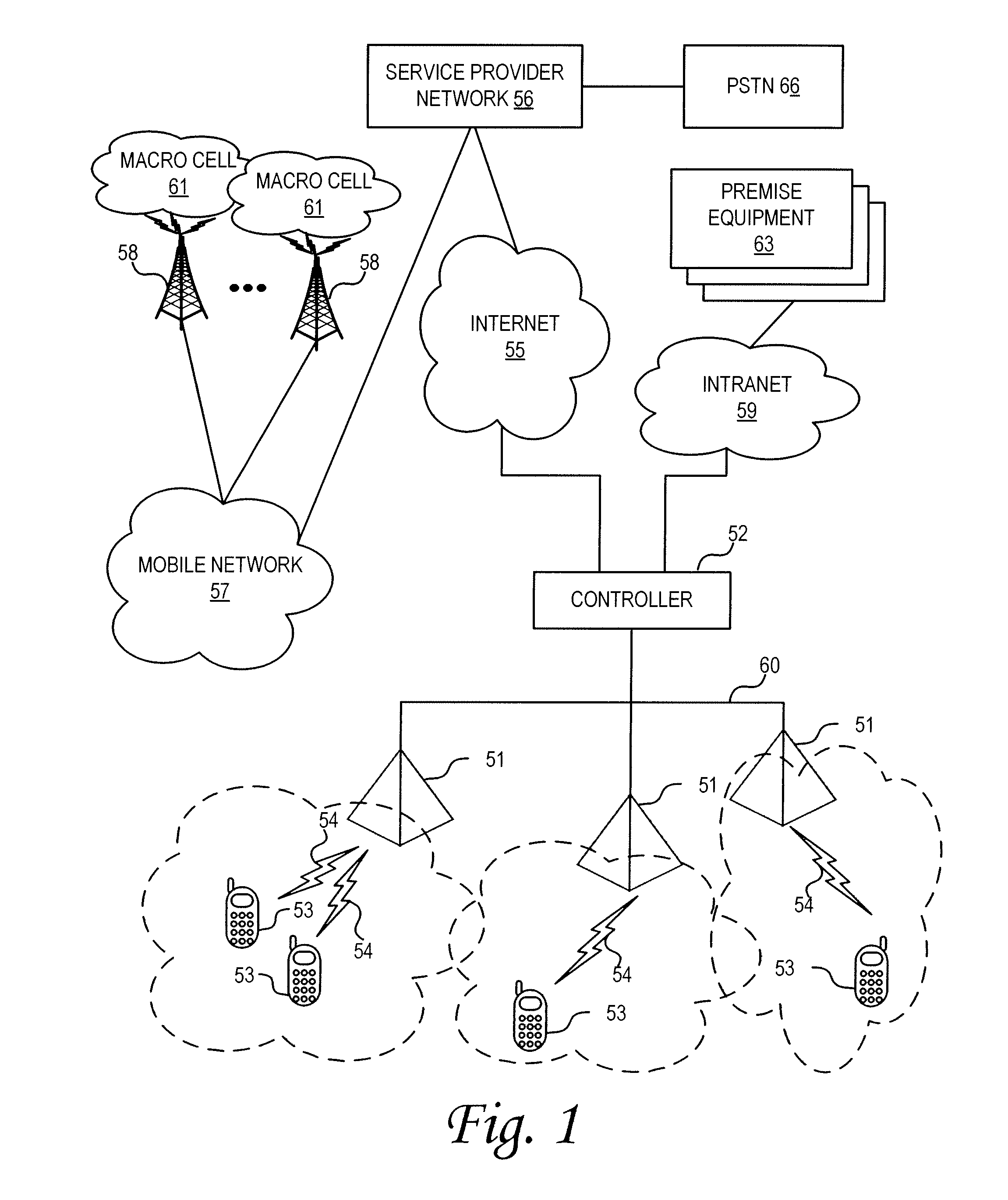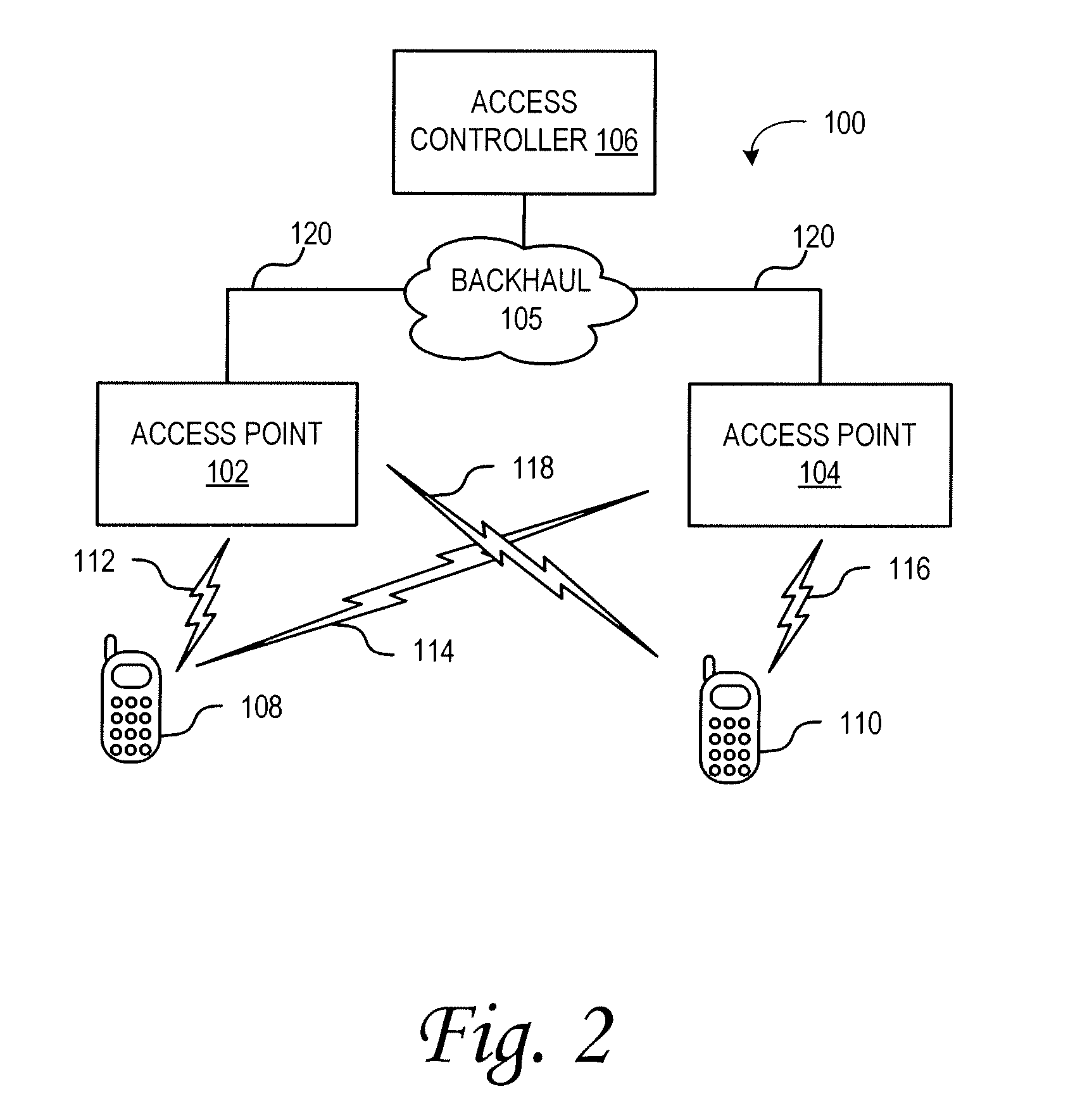Dynamic topological adaptation
a topological adaptation and dynamic technology, applied in the field of wireless communications, can solve the problems of limited flexibility and use of early radios, and achieve the effect of reducing bottlenecks and improving balan
- Summary
- Abstract
- Description
- Claims
- Application Information
AI Technical Summary
Benefits of technology
Problems solved by technology
Method used
Image
Examples
Embodiment Construction
[0011]The present invention is directed toward a system and method for providing load or traffic based reconfiguration for communication networks. Network operations are monitored and analyzed to determine loading balance across the network or a portion thereof. Where warranted, the network is reconfigured to balance the load across multiple network entities. For example, in a cellular-type of network, traffic loads and throughput requirements are analyzed for the access points and their user equipment. Where loading imbalances occur, the cell coverage areas of one or more access points can be reconfigured to alleviate bottlenecks or improve balancing.
[0012]According to an embodiment of the invention in a communications network that is made up of a plurality of access points communicating with a plurality of wireless terminals, wherein a wireless terminal communicates with the network by way of an assigned access point, a method of load adjustment includes monitoring access point lo...
PUM
 Login to View More
Login to View More Abstract
Description
Claims
Application Information
 Login to View More
Login to View More - R&D
- Intellectual Property
- Life Sciences
- Materials
- Tech Scout
- Unparalleled Data Quality
- Higher Quality Content
- 60% Fewer Hallucinations
Browse by: Latest US Patents, China's latest patents, Technical Efficacy Thesaurus, Application Domain, Technology Topic, Popular Technical Reports.
© 2025 PatSnap. All rights reserved.Legal|Privacy policy|Modern Slavery Act Transparency Statement|Sitemap|About US| Contact US: help@patsnap.com



